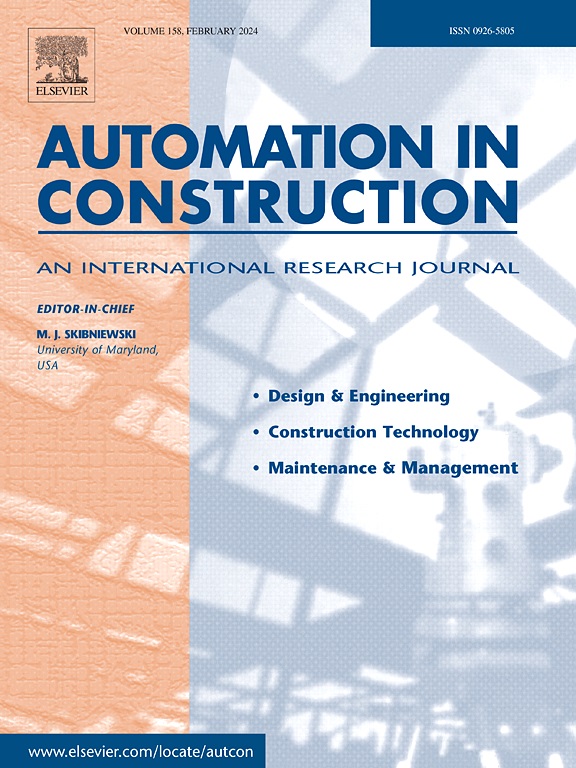Blockchain-integrated zero-knowledge proof system for privacy-preserving near-miss reporting in construction projects
IF 11.5
1区 工程技术
Q1 CONSTRUCTION & BUILDING TECHNOLOGY
引用次数: 0
Abstract
Effective management of near-miss data is essential for proactive safety practices in construction. Traditional reporting and management methods face challenges such as data loss, susceptibility to manipulation, and poor traceability, which undermine their reliability and collaborative efforts. Blockchain technology can enhance data integrity, security, transparency, and reliability in safety data management. However, conventional Layer-1 blockchain systems require third-party verification processes, compromising participant anonymity—crucial for effective near-miss reporting and incur high transaction fees, presenting several practical concerns. To address these issues, this paper developed and tested a zero-knowledge proof and Layer-2 blockchain integrated system for near-miss reporting. This system was validated through a proof-of-concept and hypothetical case study, achieving perfect unlinkability with a degree of anonymity scored at d = 1 and reducing the cost of report submission to USD 0.0011. These advances significantly contribute toward proactive safety management in construction by facilitating safe reporting environments and cost-effective near-miss management.
区块链集成零知识证明系统,用于建筑项目中保护隐私的险情报告
有效管理险情数据对于在施工中采取积极主动的安全措施至关重要。传统的报告和管理方法面临着数据丢失、易被篡改和可追溯性差等挑战,这些问题削弱了其可靠性和协作性。区块链技术可以提高安全数据管理的数据完整性、安全性、透明度和可靠性。然而,传统的第一层区块链系统需要第三方验证过程,这就损害了参与者的匿名性--这对有效报告近乎失误至关重要,而且会产生高昂的交易费用,从而带来一些实际问题。为解决这些问题,本文开发并测试了一个零知识证明和第 2 层区块链集成系统,用于险情报告。该系统通过概念验证和假设案例研究进行了验证,实现了完美的不可链接性,匿名度为 d = 1,并将报告提交成本降至 0.0011 美元。通过促进安全报告环境和经济高效的险情管理,这些进展极大地推动了建筑业的主动安全管理。
本文章由计算机程序翻译,如有差异,请以英文原文为准。
求助全文
约1分钟内获得全文
求助全文
来源期刊

Automation in Construction
工程技术-工程:土木
CiteScore
19.20
自引率
16.50%
发文量
563
审稿时长
8.5 months
期刊介绍:
Automation in Construction is an international journal that focuses on publishing original research papers related to the use of Information Technologies in various aspects of the construction industry. The journal covers topics such as design, engineering, construction technologies, and the maintenance and management of constructed facilities.
The scope of Automation in Construction is extensive and covers all stages of the construction life cycle. This includes initial planning and design, construction of the facility, operation and maintenance, as well as the eventual dismantling and recycling of buildings and engineering structures.
 求助内容:
求助内容: 应助结果提醒方式:
应助结果提醒方式:


